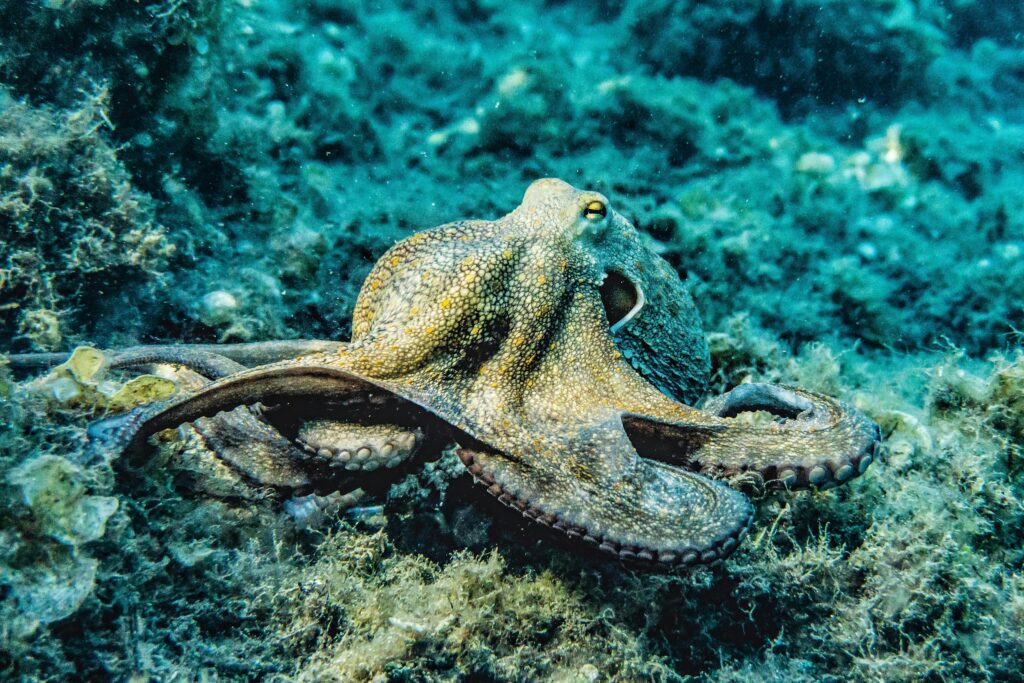Too Smart for Us

We like to think we’re the smartest species on the planet. And maybe we are — in some ways. But nature has its own kinds of intelligence. Ones we often miss. Ones that don’t show up in laboratories, but in the wild — under pressure, in silence, in moments of instinct and memory. And sometimes, the wild outsmarts us entirely.
In Uganda’s Kibale Forest, wild chimpanzees were observed checking camera traps — not just ignoring them, but stopping to inspect the lens, avoiding eye contact, and even shifting their path slightly. Researchers eventually realized the chimps had learned to recognize when a camera was live — and how to pass by without being recorded. No training. No reward. Just awareness and adaptation.
In Alaska, ravens were caught on trail cams pulling fishing lines from ice holes — something only humans and bears had been seen doing. They waited until lines were unattended, then dragged them in beak-first, checking for fish or bait. Similar behavior has been recorded in Norway and Japan. They weren’t copying humans. They were solving a problem in their own way.
In Botswana, elephants have been seen digging artificial wells in dry riverbeds — then covering them with bark and sand. Why? To hide the water from baboons, other elephants, or even humans. They’d return days later and uncover it. The placement was intentional. So was the patience.
Octopuses — already known for escaping aquariums — have now been filmed throwing shells and silt at other octopuses, deliberately aiming with their siphons. Sometimes it’s a defensive move. Sometimes it looks like irritation. Either way, it’s targeted. Thoughtful. Social.
We test animals in labs. But in the wild, the tests are real: hunger, danger, drought, unpredictability. And time after time, animals not only survive — they invent. Improvise. Outsmart. Sometimes they do it quietly. Sometimes they let us see.
So yes — we might build better tools. But the wild has a kind of intelligence we’re still learning to recognize. And sometimes, the smartest thing we can do… is admit we don’t understand it yet.
In Uganda’s Kibale Forest, wild chimpanzees were observed checking camera traps — not just ignoring them, but stopping to inspect the lens, avoiding eye contact, and even shifting their path slightly. Researchers eventually realized the chimps had learned to recognize when a camera was live — and how to pass by without being recorded. No training. No reward. Just awareness and adaptation.
In Alaska, ravens were caught on trail cams pulling fishing lines from ice holes — something only humans and bears had been seen doing. They waited until lines were unattended, then dragged them in beak-first, checking for fish or bait. Similar behavior has been recorded in Norway and Japan. They weren’t copying humans. They were solving a problem in their own way.
In Botswana, elephants have been seen digging artificial wells in dry riverbeds — then covering them with bark and sand. Why? To hide the water from baboons, other elephants, or even humans. They’d return days later and uncover it. The placement was intentional. So was the patience.
Octopuses — already known for escaping aquariums — have now been filmed throwing shells and silt at other octopuses, deliberately aiming with their siphons. Sometimes it’s a defensive move. Sometimes it looks like irritation. Either way, it’s targeted. Thoughtful. Social.
We test animals in labs. But in the wild, the tests are real: hunger, danger, drought, unpredictability. And time after time, animals not only survive — they invent. Improvise. Outsmart. Sometimes they do it quietly. Sometimes they let us see.
So yes — we might build better tools. But the wild has a kind of intelligence we’re still learning to recognize. And sometimes, the smartest thing we can do… is admit we don’t understand it yet.
